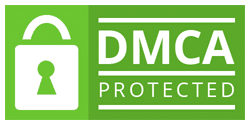8850
(a) Included in the amount of ‘Expenses’ in the trial balance provided above are:
? Cost of sales $17,930,000.
? Salaries and wages $9,214,000.
? Annual leave expense of $966, 000.
? Long service leave expense of $86,000.
? Power and other utility expenses $1,240,000.
? Insurance expense $795,600.
? Advertising expenses $1,690,000.
? Other general operating expenses of $3,112,500.
? Depreciation expense for equipment $680,000.
? Depreciation expense for vehicles of $380,000.
? Depreciation expense for buildings of $695,000.
? Warranty expense of $1,240,000.
? $487,000 being cost of land sold in March 2019.
? $525,000 payment to auditors ($65,000 of this was for taxation advice and the rest
for the audit of the company).
? $400 for subscription to online TV/sports streaming service for staff break/lounge
rooms.
(Note: This does not detail all expenses included in the total of ‘Expenses’ in the trial balance
above. You should classify any remaining expenses as ‘other’ or ‘miscellaneous’)
(b) The company borrowed $1,700,000 from MyBank on 1 July 2018. On 1 July each year,
the company is required to make a payment of interest accrued for the year. On 1
July 2019, the company made a payment of $76,500, being interest accrued for the
year. The company is required to pay the principal amount in full on 1 July 2022.
(c) Only one item of land was sold during the period (in March 2019) for $780,000 cash.
(d) The extraordinary gain relates to the unexpected receipt of monies. In 2015 a major
customer of the company was declared bankrupt owing the company $1,210,000. It
had been expected that no money would be received, and the company had written
this bad debt off in May 2016. However, an investigation was undertaken by ASIC
and assets have now been recovered from the customer. As a result, in April 2019
the company received $626,000 (no further money is expected to be recovered from
this previous customer).
(e) The balance of the provisions in the trial balance is comprised of:
? Legal provision of $650,000 (see (m) below).
? Provision for annual leave of $234,000. The balance of the provision for annual
leave at 30 June 2018 was $108,000.
? Provision for Long Service leave of $384,000. No long service period was taken
during the year ended 30 June 2019 and none is expected to be taken until 2022.
ACCT2005 SP2 2019 Annual Report Assignment Case Study Page 3 of 4
? Provision for warranties of $942,600. The company previously provided a 12-
month warranty on the majority of its products and services. However, as a
number of competitors provide for longer warranty periods, the company
decided to change its warranty conditions. From 1 May 2019 the company
provided a 3-year warranty on the majority of its products. This is expected to
increase the warranty expense for full financial years in the future by around 18%.
It is expected that 80% of the balance of this warranty provision as at 30 June
2019 will be used up by 30 June 2020. The balance of the provision for warranties
at 30 June 2018 was $692,000.
(f) The prepaid expenses in the trial balance includes $65,000 for prepaid insurance,
$107,000 for prepaid advertising, and $73,700 for prepaid maintenance (cleaning)
services. The accrued expenses relate to utilities (e.g. power).
(g) Directors had declared a dividend of $357,000 from retained earnings on 2 July
2018. This required no further approval or authorisation. This dividend was paid on
1 September 2018.
(h) At 1 July 2018 the share capital comprised:
? 2,500,000 fully paid ordinary shares at an issue price of $1.00 issued on 1 July
2006. Share issue costs paid in relation to this issue were $23,000.
? 50,000 fully paid ordinary shares at an issue price of $1.00. These were bonus
shares issued on 1 August 2012.
In lieu of an interim dividend, a bonus share issue of 1 fully paid ordinary share
(issue price $1.20) for each 25 shares held, was made on 28 January 2019 from the
general reserve.
Unless otherwise indicated the following events/transactions are not reflected in the
trial balance above. You will need to make appropriate adjustments if required.
(i) A review by the chief accountant on 6 July 2019 revealed that the interest related to
the loan (see (b) above) has not been accounted for at all in the trial balance.
(j) On 30 June 2019 the directors decided to transfer $2,000,000 to the general reserve
from retained earnings.
(k) Directors declared a final dividend (from retained earnings) on 3 July 2019 of 17 cents
per share. This requires no further approval and/or authorisation and is expected to
be paid in early September 2019.
(l) In late April 2019, the company tendered for a contact to provide a range of its
products and services to a government department for 3 years. On 4 July 2019, the
company was advised that their tender was successful, and it had been awarded the
contract, commencing on 1 September 2019. The contract is expected to increase
revenue by around 20% (although profits are expected to only increase marginally as
the company submitted a low bid to increase the chances of obtaining the contract).
ACCT2005 SP2 2019 Annual Report Assignment Case Study Page 4 of 4
Further, it is hoped that this may increase the possibility of entering into further
contracts with government departments in the future.
(m) On 10 July 2019, lawyers provided further information about a claim made against
the company in January 2018. This case related to a customer suing the company for
damages, claiming to have seriously injured themselves whilst using one of the
company’s products. The company’s lawyers had previously advised that it was
extremely likely that the company would be required to pay around $650,000 in
damages. However further evidence has indicated that the claim is fraudulent (the
customer has in the past tried to sue a number of other companies for the same
medical condition) and it is now believed that that the company will not be liable for
any damages. The matter is expected to be finalised in October 2019.
(n) The company tax rate is 30%. Ignore tax-effect accounting. Tax expense should be
based on 30% of the accounting profit before tax. No tax expense has yet been
recorded.
Attachments:
 ACCT2005-SP2-….pdf
ACCT2005-SP2-….pdf





